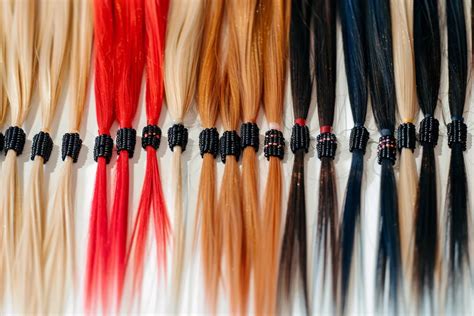Whether you’re seeking to enhance your natural locks or achieve a dramatic transformation, hair extensions offer a versatile solution. However, understanding the cost involved is crucial before embarking on this beauty endeavor.

Types and Materials
The cost of hair extensions primarily depends on the type and material used.
Human Hair Extensions
- Remy Hair: The highest quality, sourced from a single donor, with the cuticles intact
- Non-Remy Hair: May contain cuticles from different directions, leading to potential tangling
- Double Drawn Hair: Hair strands are sorted according to length, resulting in a thicker, fuller appearance
Synthetic Hair Extensions
- Kanekalon Fiber: Commonly used, affordable, and heat-resistant
- Toyokalon Fiber: A higher-quality synthetic, offering a natural shine and reduced tangling
Prices
The cost of hair extensions can vary widely depending on the length, weight, and quality.
Human Hair Extensions
| Type | Weight | Price Range |
|---|---|---|
| Remy Hair | 100 grams | $150-$300 |
| Non-Remy Hair | 100 grams | $100-$200 |
| Double Drawn Hair | 100 grams | $200-$400 |
Synthetic Hair Extensions
| Type | Weight | Price Range |
|---|---|---|
| Kanekalon Fiber | 100 grams | $20-$50 |
| Toyokalon Fiber | 100 grams | $50-$100 |
Installation Methods
The installation method also impacts the cost of hair extensions.
Sew-In Extensions
- Labor-intensive, but allows for seamless blending
- Cost: $500-$1,000
Tape-In Extensions
- Quick and easy to apply
- Cost: $300-$600
Clip-In Extensions
- Temporary and reusable
- Cost: $100-$300
Fusion Extensions
- Permanent attachment using heat
- Cost: $700-$1,500
Maintenance and Upkeep
Hair extensions require regular maintenance to ensure they remain healthy and attractive.
- Washing: Use sulfate-free shampoo and conditioner (cost: $20-$50 per month)
- Conditioning: Apply a deep conditioner weekly (cost: $10-$20 per month)
- Styling: Avoid using excessive heat, and invest in a heat protectant spray (cost: $15-$30 per month)
- Regular Appointments: Consult your stylist for periodic check-ups and adjustments (cost: $50-$100 every 4-6 weeks)
Cost-Effective Strategies
Consider these tips to reduce the cost of hair extensions:
- Purchase Remy Hair: While more expensive initially, Remy hair offers greater longevity and minimal shedding.
- Choose Synthetic Hair: Synthetic extensions are more affordable, but may not provide the same lifespan or natural appearance.
- Opt for Clip-In Extensions: Clip-in extensions allow for self-installation, eliminating the need for professional services.
- Consider Pre-Bonded Hair: Pre-bonded hair strands can be applied without the use of tape or glue, reducing installation costs.
- DIY Maintenance: Learn basic hair care techniques to save on salon visits.
Common Mistakes to Avoid
Avoid these common pitfalls when dealing with hair extensions:
- Overspending: Determine your budget and stick to it.
- Choosing the Wrong Type: Select hair extensions that complement your natural hair and lifestyle.
- Neglecting Maintenance: Regular care is essential for extending the lifespan of your hair extensions.
- DIY Installation: Leave installation to a professional to avoid potential damage to your hair.
- Using Heat on Synthetic Hair: Heat can melt synthetic hair, causing irreparable damage.
Step-by-Step Approach to Installing Hair Extensions
Materials:
- Hair extensions
- Installation tools (e.g., clips, tape, bonding rods)
- Heat protectant spray
Instructions:
- Prepare your natural hair: Wash, condition, and detangle your hair.
- Section your hair: Divide your hair into small sections to prepare for attachment.
- Attach the extensions: Depending on the method chosen, follow the instructions for secure attachment.
- Style as desired: Use styling products and tools to blend the extensions with your natural hair.
- Monitor and maintain: Check the extensions regularly and follow maintenance tips for longevity.
